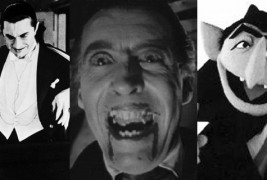
I know a woman who’s a paranormal romance writer. I should say right off that paranormal romance isn’t my thing at all, but we have common cause in that we’re both trying to choke some sort of life for ourselves out of the world of writing.[1] So even if her influences are more Twilight and mine are more At the Mountains of Madness, we still go through the same process of trying to break twenty-six unruly letters to our wills. And it’s not like we’ll ever be competing for the same readers.
The last time we talked, it turned out she had gotten a publishing contract for her latest novel, about angels. I congratulated her, and that’s when she said, “It’s a good thing I wrote about angels, because they’re the next big thing.”
“The next big thing?” I said.
“Yeah. People are getting tired of vampires, so now they’re publishing a lot of books about angels.”
A brief hope took wing and died in me that these wouldn’t be buff, blond, Fabio angels but freaky-ass Old Testament angels, the wrath of God on earth.[2] But then came the question: who decided this? Is there a secret cabal of publishers and literary agents who sit down, Illuminati-style, and plot what supernatural creature is going to be the next to worm its way into our collective hearts and groins? And now that angels are the Next Big Thing, what can those of us retrogrades still invested in classic supernatural beasts hope for? Fear not, savage readers. I’ve done some research on our behalf.
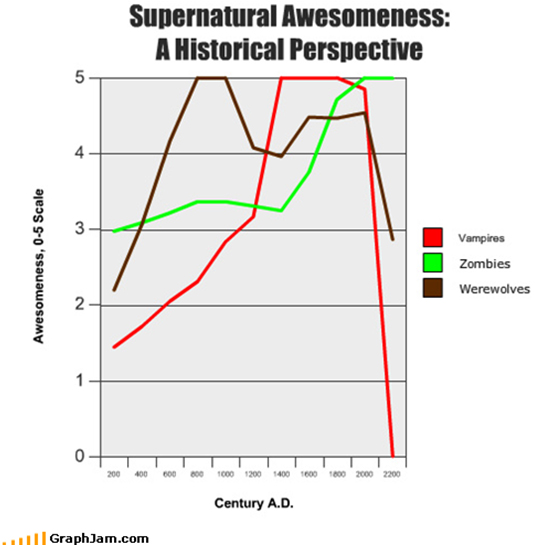 [3]
[3]
Vampires
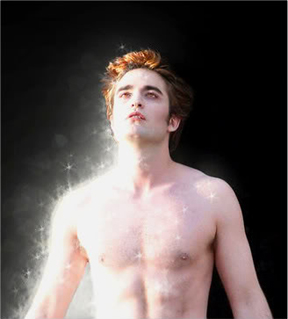
This isn’t the first hit vampires have taken. Consulting the graph, we note that vampires started out as a relatively low-yield investment, awesomeness-wise. Roman traditions concerning the Manes, blood-drinking ghosts, didn’t really survive the Empire’s conversion to Christianity. Still, impressive growth occurred during the Middle Ages, with a four-century peak beginning in 1431 with the birth of Vlad III of Wallachia, also called Draculya (”Son of the Dragon/Devil”) and Tepes (“The Impaler”), famous for skewering invading Ottoman Turks[4] on long, wooden stakes. This strong trend continued through the 1500’s with the life of Erzebet Bathory, Hungary’s Blood Countess[5] and up through the 1800’s, with the publication of Stoker’s Dracula. Some instability began to occur towards the end of the 20th century, and the dawn of the new millennium has pushed vampires into a freefall that threatens to make their humble beginnings at the end of the Roman Empire look like a golden age of awesomeness.
The Future: Gouts of Twilight fan-fiction and the continued existence of Stephanie Meyer will only hurt vampires for the foreseeable future. While experts liberally estimate only 15-20 vampires left worldwide, most lemurologists predict that by 2200, the last of them will have been killed off by poachers eager to sell their fangs as aphrodisiacs.
Werewolves
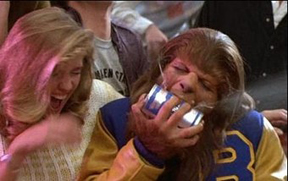
The awesomeness of werewolves peaked early. Viking Age berserkers, believed to transform into wolves and bears, made rapid early gains that declined just as quickly after Scandinavia converted to Christianity. Much Church handwringing about whether werewolves actually took wolf form or just cast Satanic, wolf-shaped illusions caused a slump in the high Middle Ages. A slight but insufficient rebound occurred in the Early Modern era, with the rampages of Peter Stubbe,[6] Jean Grenier[7] and the Beasts of Gevaudan.[8] Following a slight dip in the 19th century, the 20th saw continued strong performance with the first werewolf movies, petering off with the turn-of-the-millennium “Team Jacob effect.”
The Future: I suppose now is as good a time as any to tell you about a frightening rumor I heard from a writer friend of mine. Evidently there’s a subculture of kids somewhere (Great Britain, I think) who’ve decided that they want to be werewolves. That’s fair, right? I know I’ve been there. I mean, I spent a large part of my childhood hoping against hope that the next time the moon was full I would turn into a towering lupine horror. What I never did was go clubbing with little ears barretted into my hair and a little gray tail pinned on my ass. Werewolves have been Cullenized, savage readers. Not only that, but the Human Genome Project successfully isolated the allele that causes lycanthropy, and gene therapy (especially early in life) has been shown to be effective in preventing both voluntary and lunar metamorphosis in up to 95% of werewolves. Bleak.
Zombies
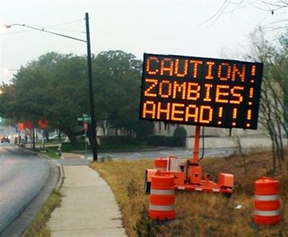
A solid blue chip of a monster, zombies started at a strong “3” on the Awesomeness axis with the rise of a religion centered around a man rising from the dead. Viking legends about draugr, violent corpses returned to attack the living, make for a slight bulge c. 800-1000 A.D. Zombie awesomeness stagnated after that, as the shambling progress of the graph shows. However, increased colonization of the Caribbean around 1600 also precipitated a meteoric rise in the awesomeness of zombies with the beginnings of the syncretic faith known as Vodoun.[9] Haitian independence in 1804 favorably impacted the coolness of zombies, buttressing them for a strong twentieth century with such highlights as George Romero’s oeuvre, World War Z, and the current zombie craze.
The Future: I’m actually pretty sick of zombies.[10] Time was the idea of getting pinned down in my house with nothing but a flashlight and a meat cleaver while the blood-keened dead attempted to pull me through the hastily boarded windows was quite the adrenaline-pumped proposition. Of course, that was before “They found themselves in a wasteland of flesh-hungry walking corpses. . .” became the horror equivalent of “So a guy walks into a bar. . .” Why Romero Rules™–headshots and bites? Why a hunger for brains? How did the kick-ass Shaun of the Dead spawn an entire genre of “Zom Coms?” Why do these stories, with few exceptions, always take place in the modern, Western world?
Of course, my bitching about how clichéd zombies have become won’t save me when the outbreaks begin—and the graph all but us assures they will, probably within our lifetimes. I’ll be barricaded with my lovely fiancée and our four cats, hacking off zombie arms with my kukri as they burst through holes in the sheetrock. And I’ll be trying to ignore the growing recognition that a cannibal pandemic of awesomeness will soon sweep the living from the earth.
So mathematically, I’m not sure angels are the next big thing.
[1] I’m not consorting with the enemy—I swear.
[2] Seriously—the four-headed, chariot-pulling monsters in the Book of Ezekiel are angels.
[3] I made this graph at GraphJam.com, a site you should go to for all your humor and data organizational needs.
[4] Or any other man, woman or child who pissed him off.
[5] She bathed in it. Because it made her feel beautiful.
[6] A sick bastard from Cologne, Germany, who liked to put on a transformative wolfskin belt and eat people. While in human form (?), he pursued affairs with his sister and daughter. His death involved being broken on a wheel and pulled apart with heated steel pincers.
[7] Another sick bastard (this time from Gascony, France) who received the power of lycanthropy from a being called the Lord of the Forest in exchange for his soul and the (kind of weird) promise that he would never cut his left thumbnail. Even after he was caught and imprisoned for life in a monastery, he still got nostalgic about the good old days when he could roam the countryside eating little girls with gay abandon.
[8] A group of strange, only vaguely wolfish creatures responsible for a series of vicious attacks on the peasantry in 18th century France.
[9] Vodoun (“Voodoo”) zombies come in two kinds, the zombi astrale (a bodiless ghost) and the zombi cadavre (a spiritless body). The zombi astrale is also called a duppy and is known for its nauseating breath. The zombi cadavre is closer to what we think of as a zombie—a shambling corpse reanimated by a bokkor (sorcerer) as a slave. The lips and eyes of a zombi cadavre were frequently sewn shut to keep it from ingesting salt or seeing the ocean, both of which would return the creature’s soul.
[10] I’m pretty sick of steampunk too, but that’s another rant for another day.
9 thoughts on “The Horror Graph: Crunching Numbers and Spitting out Bone Shards”
Comments are closed.


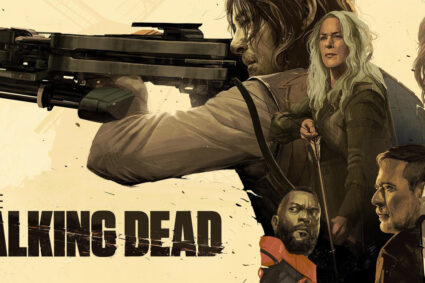
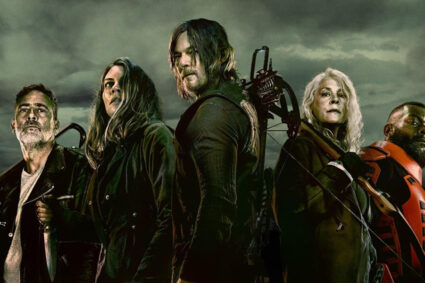
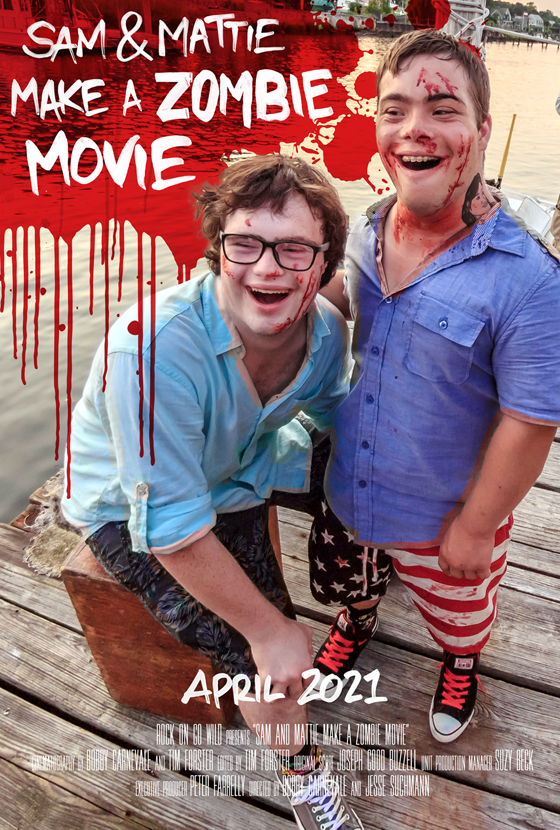










Come on, man. The novel Dracula is about a love triangle between a nice guy, a bad boy, and a woman told from the nice guy’s perspective. The novel Twilight is about a love triangle between a nice guy, a bad boy, and a woman told from the woman’s perspective.
Yet Dracula is practically the zenith of vampire myth, and Twilight is the nadir? GIRLS RUIN EVERYTHING!
Point taken, Biff, but then, “Romeo and Juliet” is the story of two star-crossed lovers separated by malign circumstance. . .and so is every grocery store Harlequin Romance novel ever written. And yet, somehow, William Shakespeare remains one of the great names in world letters and Harlequin Romance is viewed as carbon-copy hackwork. God couldn’t be in the details, could He?
But the zenith of vampirism, according to the graph, wasn’t Stoker, but the exploits of Vlad Tepes and Erzebet Bathory. See? Who says vampirism isn’t equal opportunity?
“The Smurfs” is a show about a nefarious outsider looking for a hidden village inhabited by an exotic tribe, told from the tribe’s perspective. “Cannibal Holocaust” is a movie about nefarious outsiders looking for a hidden village inhabited by an exotic tribe, told from the outsider’s point of view. Hey, this is easy!
Seriously though, I think broadly giant plot components do not suffice when comparing stories. There are so many other variables that shape the relative success of a story – variables that both include and affect things such as tone, tension, aesthetics, and hundreds of other qualities. Discerning the differences attributable to these factors requires a closer analysis because when merely viewed through a macroscopic lens, all stories are virtually identical.
Hunter: to be fair, I did say Dracula was “practically” the zenith of vampire myth. Dracula was also a tawdry pulp novel at the time of it’s publication, and only in the fullness of time (and after a movie version) became the literary classic we venerate today. Who knows, maybe in a couple centuries people will be lit criting the themes of Twilight? I wouldn’t bet on it, but as Dracula — and the works of Lovecraft, Poe, and Phillip K. Dick among others — illustrates, occasionally so-called hackwork does get canonized.
Anyway. Vampires in fiction have always represented human sexuality, be it the predatory male sexuality of more traditional vampires or naïve female sexuality in contemporary urban fantasy/paranormal romance. The tragic-poetic sympathetic treatment of vampires has been done since the 1960s. Twilight isn’t exactly responsible for a new and revolutionary take on vampire myth. Twilight is responsible for an influx of female fans. Which, again: GIRLS RUIN EVERYTHING.
Biff: Yeah, maybe people in the future will view “Twilight” as an iconic work of early twenty-first century horror. They might also view “Debbie Does Dallas” as a powerfully filmed portrait of the Epicurean sexual zeitgeist of the 1970’s. The joke will be on me, I suppose, but I don’t believe in changing my tastes based on what people in the future might or might not think. And for every Lovecraft, there have been thousands of writers like Seabury Quinn–all the rage in “Weird Tales” in the 1930s, today barely remembered (and deservedly so). “History will vindicate me!” is a shaky recipe for literary prominence.
But more troubling to me is your seeming supposition that horror was a “boy’s field” until “Twilight” appeared. Maybe the stereotypical horror fan is a misogynistic and maladjusted twenty-something male, but of all the horror fans I know, I’d say a good half are women, and they’re not all starry-eyed Edward fangirls by any means. Women have always figured prominently in horror: Mary Shelley, Joyce Carol Oates, Charlotte Perkins Gilman, C.L. Moore, Ann Radcliffe, Chelsea Quinn Yarbro, Angela Carter, Charlaine Harris. . .GIRLS RUIN EVERYTHING!
You’ll note that in my article I never mentioned Anne Rice or Laurell K. Hamilton. Honestly, it’s because I’m not a fan of either’s writing, but I can respect a different approach by a competent writer. Meyer’s not a competent writer. And honestly, part of it boils down to sheer, arbitrary personal taste. I like my horror grotesque and weird. I like my vampires more Orlok and less Lestat. Not everyone has that preference, and I can respect a difference of opinion.
As a minor side note, I strongly question whether vampires have always represented human sexuality. In the Middle Ages, vampires were believed to result from suicides and the deaths of witches, heretics and condemned criminals. The vampire represented ultimate separation from God. I believe (and I could be wrong) that the vampire as representative of sexuality began with the Victorians, egged on by nascent Freudian psychology. The point is that vampires have generally represented whatever society found most threatening, whether it be religious apostasy or uncontrollable urges.
1) The whole pulp/hackwork thing? Is a criticism lobbed at pretty much every piece of genre fiction, ever. Not every penny dreadful becomes a classic, obviously, but almost every horror classic was at one point derided as a penny dreadful. “At the time of it’s publication it was critically received as hackwork” is not the most scathingly relevant criticism to make of any horror novel, you follow?
2) That exhaustive list of eight female horror writers certainly refutes the point that Stephanie Meyer is the first, last, and only woman in horror. Unfortunately, nobody made that point. Anecdotal evidence aside, horror is a male-dominated genre. This doesn’t erase the horror-loving chicks you personally know, nor does it deny the exceptional woman’s participation in/contribution to horror culture. (Duh.) But the fact remains: most big names in horror are men, most horror is produced by men, most mainstream horror forums skew predominantly male, and male perspectives are as a whole better represented in horror than female perspectives. This isn’t some radical fringe opinion I am espousing just to furrow your brow — it’s a pretty widely observed phenomenon.
3) Laurell K. Hamilton? Competent? It sounds like you stopped reading after Obsidian Butterfly. I don’t blame you.
4) “Vampires IN FICTION,” as I said. I stand by the assertion that vampire literature has strong erotic overtones.
Anyway. I think this “TWILIGHT IS THE DEATH OF DOWNTOWN/VAMPIRES/HORROR” histrionics generally have less to do with the actual substance of Twilight — which is what? A horror novel in need of editing? A vampire book with a prominent relationship plot-line? That features attractive, sympathetic vampires? Don’t tell me you’ve never read THAT before. — than the fact that it represents a perceptible demographic shift. It’s a novel explicitly for girls, about a girl, by a girl, and it’s wildly popular.
Biff,
1) Okay. A lot of horror was dismissed as hackwork before finding its rightful place in the canon. So was “Moby Dick.” You get no argument from me there. Beyond that, I’m afraid I don’t follow, Biff. Are you saying I should be open-minded because people in the future might consider “Twilight” a literary classic like “Frankenstein” or “Dracula?” Maybe I’m stepping onto the wrong side of history here, but I’ll take my chances.
2) So would you like me to list more? You seemed to be making the point that women were marginalized in horror until “Twilight.” I listed a few of the more prominent female horror writers to show that no, women have always been here, creating and enjoying horror with the best of them. You don’t furrow my brow, Biff. I hope not to furrow yours when I say you dismissed my “anecdotal evidence” with more anecdotal evidence. You say the exclusion of women from horror is “a pretty widely observed phenomenon.” By who? In what context and capacity?
3) I haven’t read much Laurell K. Hamilton. I’ve heard she’s gone downhill, but I don’t know.
4) So where do you draw the “fiction” line? Does the oral tradition count? Lots of cultures have told and continue to tell stories about vampires. Some have erotic overtones, others don’t. Do you mean vampire literature, or just fiction?
Number 4’s a quibbling point, really. More germane to our discussion is this: Why did my flippant dismissal of “Twilight” in an obviously satirical context touch off such a ferment in you, Biff? If you think “Twilight” is the most awesome piece of horror literature since Dante’s “Inferno,” that’s okay. I know lots of intelligent, tasteful people (even one or two men, believe it or not) who are “Twilight” fans, and I don’t bash them out of hand for enjoying it.
Why do I hate “Twilight?” The same reason I hate Christopher Paolini’s “Inheritance Cycle.” As a writer, I work extremely hard to create original, vivid works with fresh language, well-drawn characters and new plots. When a Christopher Paolini or a Stephanie Meyer makes a bestseller out of a cliche-ridden, poorly-crafted, horribly-edited repackaging of what was already dead and buried two decades ago, it angers me. Is that jealousy? Maybe. But it comes out of an honest dedication to and concern for the state of my craft and chosen career. The gender of the writer has nothing to do with it.
You seem pretty keen to frame my dislike of “Twilight” as sexism, which indicates to me one of two things. Either A) you’ve had arguments with people before who really did dismiss “Twilight” solely because they considered it “girly” or “gay” or B) you want to pick a fight with me. If A), I’m sorry about that. “Ravenous Monster” is about providing well-done, mature, enjoyable material (plus some stuff by me) for discerning horror fans, and I apologize if my critique of “Twilight” sounded like adolescent name-calling to you. If B), I suggest you marshall your soldiers a bit better because nothing you’ve said thus far has given me a clear idea of what your ultimate thesis even is.
Haha, you totally called it. I am a huge butthurt Twihard with a personal vendetta. The under-representation of women and female perspectives in horror is purely anecdotal and not, you know, a real thing that multiple published books and articles critically examine, forums exist in contradistinction to, an entire month is dedicated to raising awareness about and combating, or extant in any meaningful, corroborated way. There is no coded sexist contempt in critiques of Twilight which — twee girly loathsome sparkling aside — is a singularly awful book even as it tackles classic vampire lit themes with all the competency one would expect. The Twilight franchise degrades all vampires, everywhere, not by spurring an increased commercial interest in horror that appeals primarily to women, creating an enormous influx of female fans, or incorporating a more female-oriented perspective in retelling that hoary old vampire love story, but because Twilight is… poorly plotted and badly written. Twilight bears the distinction of being the only poorly plotted and badly written vampire novel ever. Right.
My thesis, marshaled, deployed, and going commando into whatever martial metaphor you prefer, is: Twilight sucks, maybe, but it sucks in the same way vampire lit has been sucking since at least the 1970s, if not before. It is unfairly singled out as sucking especially — much less auguring the decline of an entire mythos, which is a really extreme kind of suck — because it is emblematic of the current “feminizing” trend in horror. Feminizing being, self-evidently, a sad and degraded thing.
Anyway, despite the impression of blanket condemnation I am apparently making, I do enjoy the majority of Ravenous Monster content, large swaths of this piece included. “‘They found themselves in a wasteland of flesh-hungry walking corpses…’ became the horror equivalent of “So a guy walks into a bar…'” is unadulterated incisive truth, and anyone who didn’t spend their childhood waiting to become a werewolf only to be bitterly disappointed by puberty is… probably more well adjusted than either of us, actually. Perhaps I ought to have mentioned that at the outset? But the pervasive “Twilight killed it” meme reiterated here is stale and rife with unexamined sexism that is both hard and unwise to ignore.
I appreciate that you enjoyed much of this article–especially the werewolf part. Maybe we should shapeshift and fight this out under the full moon? That said, you assume a great deal about me personally to say that my writing is “rife with unexamined sexism.”
Do I honestly think “Twilight” killed vampires? Not really. The piece was intended satirically. I think vampires have been boring for years. If I’d wanted to decry the “feminization” of horror (and I’m not sure “Twilight” really even qualifies as horror), don’t you think I would have gone after Poppy Z. Brite or Anne Rice, both of whom offered a more feminine take on vampires years before Stephanie Meyer? Honestly, the only vampire media I’ve really enjoyed from the last decade was the (call me lowbrow if you like) “Legacy of Kain” computer game series, directed, imagined and written by a woman, Amy Henning. And honestly, the fact that Henning is a woman is probably what kept it from degenerating into a fratboy boobfest filled with bad superhero dialogue.
Furthermore, I question the logic or wisdom of a feminist defense of “Twilight.” I mean, let’s look at this story. I’m hardly the first to make this point, but Bella isn’t actualized by learning or creating or defending herself or becoming something better–she’s defined completely and totally by the existence of a man, Edward Cullen. When she gets in trouble, he saves her. When he’s gone, she’s powerless to do anything until he returns. I’ve actually heard women’s rights activists make the exact opposite claim you do–that “Twilight” gives girls a troubling message: your boyfriend isn’t dominating and borderline abusive, he’s just protecting you because he knows best.
I probably can’t prove to you that my dislike of “Twilight” doesn’t spring from a deep vein of sexism, and frankly, I don’t care if I do–you’ll think what you want to think. I kind of get the sense that no argument I make will change your mind, because you see a man criticizing a female author, and that must mean automatic sexism, right? But here’s the thing: you yourself said “Twilight” sucks. What kind of precedent does it set if we give it a pass because its author is a woman? Doesn’t it detract from the efforts of all the really good female horror authors, the ones who work hard to create the best stories they can, editing, revising and fighting for publication? I’ve excoriated Christopher Paolini as harshly as I’ve attacked Stephanie Meyer. Both are juggernauts of popularity, both are horrible writers. Shouldn’t men and women be judged as equals?
But if I eased up on “Twilight,” doesn’t that kind of send the message that, “It’s pretty good–for a girl?”